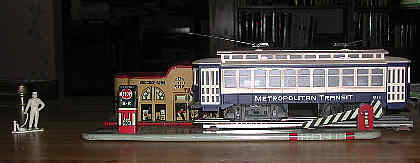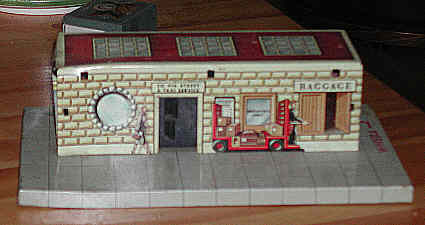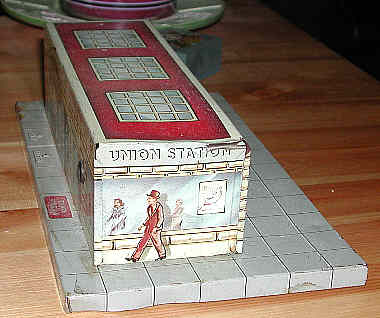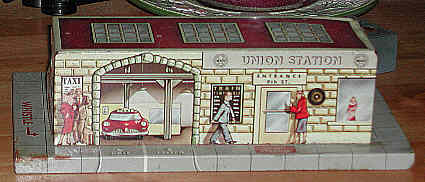
This Union Station was produced for many years. It is a fine example of original Marx tin-litho. Though obviously undersized and off-scale, the lithography exhibits excellent attention to detail. At the time it was introduced, the Union Station's Art Deco style was state-of-the-art.

From the rear, you get a good look at a loading dock in action. There is incredible detail in the lithography.

Notice the extra loading dock on the side. The tall item to the right is a mock crossing signal.

Even the trackwork gets the fine touch. This accessory was used with floor toys and O27 trains.

Here an O Scale figure is placed beside the station. If "scale," the station would be smaller than HO. It might be "scaled" at TT (1/120).

Even for Tinscale, the Union Station is woefully undersized. An O27 trolley on low-profile O27 track illustrates the difference.

This Union Station is closer to scale. Note the detailed lithography, right down to the parcels on the baggage truck. A small plastic awning is missing from this piece.

The "window" is a scene of a waiting area. Clothing styles of the time are accurately depicted.

This is a battery-operated whistling accessory. The battery cover is made to resemble a double portal door.

The back of the station includes a taxi stand. From here, it looks as if the "interior" is spacious. Note the details and clothing styles.